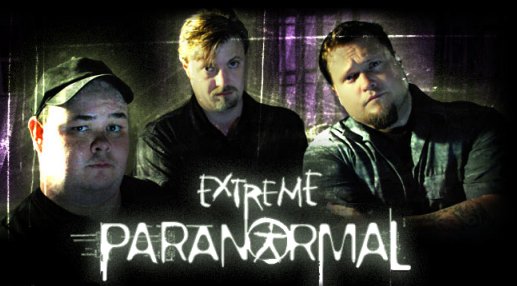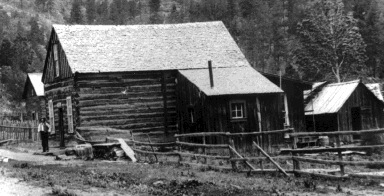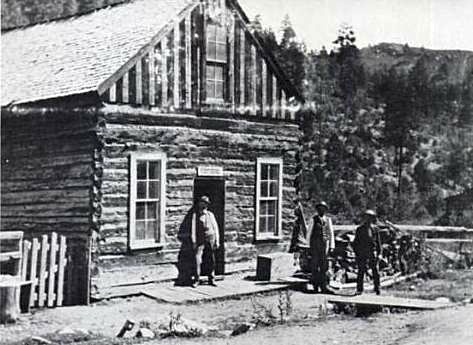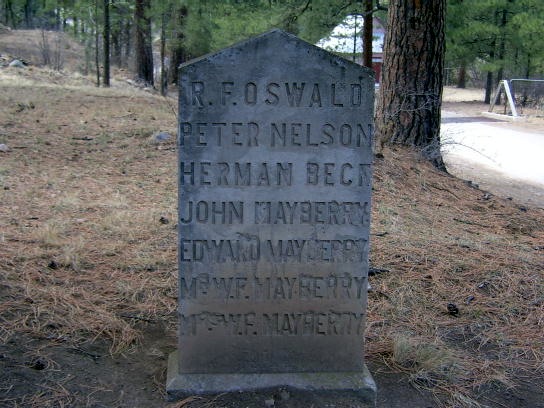In 1986, Dr. Elizabeth A. McMahan, a former Duke Parapsychology Lab scientist, confronted the preeminent physicist John Archibald Wheeler, motivated in part by a wrong Wheeler had done J. B. Rhine six years before. Dr. McMahan, aka BettyMac, gives the back story and reprints their correspondence in her memoir Warming Both Hands Before the Fire of Life, Vol. III, and I’m reprinting that section here.
In my opinion, Wheeler was kind in his replies, and just a little condescending, but at least he wasn’t hostile, and given where he was coming from that may have been the best he could summon. Everything that follows, except for the headlines, was written by Dr. McMahan.
Wheeler Accuses J. B. Rhine of Cheating

In 1979 the AAAS held its annual meeting in Houston. On January 8th one of the panel sessions was on the topic “Physics and Consciousness.” Parapsychologists were among the speakers, as was John A. Wheeler, a top theoretical physicist then at the University of Texas, who had consistently opposed parapsychological research. In his 1998 autobiography, Geons, Black Holes, and Quantum Foam, Wheeler describes his “surprise and dismay” when he discovered before the talk that at the AAAS meeting he would have to “share the podium with several parapsychologists.” He gave his own paper on the quantum theory of measurement and then distributed to the press two appendices that he had prepared to “escape guilt by association.” One was called “Drive the Pseudos Out of the Workshop of Science” and the other was “Where There’s Smoke, There’s Smoke.”
That’s about all he reports in this 1998 book about that AAAS meeting besides saying that he later wrote to William Carey, the AAAS president, trying to establish a panel “to decide whether it was time to eliminate parapsychology from the organization” and the fact that his appendices, plus the letter to Carey, “reached a large audience when they appeared in the New York Review of Books in May, 1979.” He failed to mention a crucial part of that AAAS panel discussion, a part that put him, to my mind, in a very bad light. When he was asked by his audience to be more specific about his criticisms of parapsychology, Wheeler gave an account of an experiment with rats carried out 50 years earlier for Dr. McDougall by a research assistant at Duke who, Wheeler said, had manipulated the experimental conditions to produced false results. He said that another observer, T. S. (by 1979, a well-known biologist) had disclosed this deception to Dr. McDougall, and the work was never published. Wheeler announced that the assistant who had carried out the deceptive experiment had been J. B. Rhine, the founder of Parapsychology. The implication was clear. The accusation was a bolt from the blue, and no one at that AAAS meeting challenged the scurrilous statement.
Accusation Proven Untrue, Wheeler Apologizes
Dr. Rhine was in his 83rd year at that time; he had not attended the AAAS meeting. When returning attendees reported Wheeler’s diatribe, he must not have been terribly shocked. He had long since learned that scientists, even lauded ones, are not immune to prejudice and error, but he knew he had to answer such calumny, and he procured a transcription of the AAAS seminar tape. Meanwhile the “witness” to the supposed deception in the rat experiment, Dr. T. S., wrote directly to Wheeler, entirely rejecting the charges he had made. On April 12th, 1979, Wheeler wrote an apology to Dr. Rhine, and letters from both Wheeler and Rhine were published in the July 13, 1979 issue of Science. Wheeler’s retraction letter to Science was, I thought, grudging and meager, and Dr. Rhine’s letter had the burden of explaining what the entire matter was about. He said that he was glad to know from the AAAS that Wheeler’s “statement of retraction will be sent to all those who have already purchased tapes containing a record of [his] charge against me, and further that the Wheeler charge will be deleted from tapes and records of the symposium being distributed by the AAAS in the future.”
The Correspondence
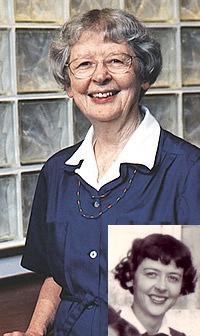
I was outraged at Wheeler’s behavior and carried the anger for a long time. But one day in 1986, six years after Dr. Rhine’s death, I read in the July issue of The American Scientist an article by Wheeler. It was his reprinted “Hermann Weyl Centenary Address.” He had summarized Weyl’s contributions to science, and he expressed his admiration for Weyl’s emphasis on “the unity of knowledge” and his fascination with the great mysteries that science still seeks to clarify. I started the article grudgingly, for I hadn’t forgotten Wheeler’s 1979 AAAS performance, but I soon was struck by the writing and the subject matter. When I finished, I decided to write to Wheeler (who naturally didn’t know me from Adam). The Weyl article made me have a more kindly feeling toward him, and it occurred to me that a scientist so honored in his field would have to be a better man than the one the AAAS meeting had stamped Wheeler as being. Surely that episode had seared his soul with shame. I felt real sympathy for one who maybe needed a second chance.
This is the letter I wrote to Wheeler on July 17, 1986, on Department of Biology stationery, and sent to his University of Texas address.
Dear Professor Wheeler:
I have just read your Hermann Weyl Centenary Address reprinted in the latest American Scientist. It makes my heart beat fast at the mysteries it expounds and the “unity of knowledge” it contemplates. Your fascination with these greatest of mysteries is obvious, showing the depth of your perception and intellect. But in my admiration I find myself even more sadly perplexed regarding your bitter scorn of Professor J. B. Rhine’s lifelong commitment to the same mysteries. He came to them through his background of Biology and Psychology, you through Mathematics and Physics, both using the methods of science. His, of course, was the more difficult way for it was cluttered with credulous and often fraudulent believers impatient with his insistence on experimentation. He is my hero, as Weyl is yours. Both had that passion to understand. There have been and will be other contributors to the eventual clarification of these soul-stirring mysteries that touch our hearts more deeply than the orthodox religions can do. To all of you I feel deep gratitude for your magnificent obsession.
Sincerely yours,
Elizabeth A. McMahan
Professor of Biology
In a couple of weeks I had a reply, handwritten on a Swiss post card and mailed from his home in Maine at High Island:
“Thank you for your thoughtful letter of July 17 and for telling me that the great mysteries stir you too. Bravo! And as for Rhine: ‘scorn,’ no; ‘bitter scorn,’ still less; only sadness that he was so misled, and misled so many others. As I wrote about ESP, ‘Where there’s smoke, there’s smoke.’
Warm regards from a former UNC [professor] to a present one!
Sincerely,
John Wheeler”
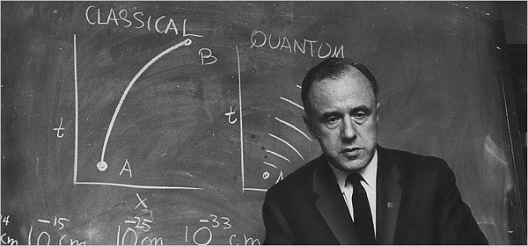
He seemed more approachable than I had feared, but I couldn’t let the matter rest there. On August 5th I wrote him again, and this time to his Maine address.
Dear Professor Wheeler:
Forgive me if I respond immediately to your very nice card of July 30. I am glad indeed that I was wrong in attributing to you bitter scorn for Dr. Rhine. It is, of course, no surprise to find disagreement with his findings. One of the assets of being a parapsychologist is the opportunity continually to find oneself on the defensive and in the role of second-class citizen. It is an experience everyone should have. I wonder if even you may not have suffered the sidelong glances of suspicion from fellow scientists that you have left the firm footing of facts for ‘far out’ dreamings. In any case, my admiration for you and my loyalty to Dr. Rhine and to the scientific method he espoused impel me to send one more letter. (Now is the time to toss it into the dust bin.)
[The following paragraph is my favorite.]
The phenomena Dr. Rhine investigated were interesting to him because they seemed to fall outside the usual framework of physics, indicating a higher magnitude of importance than any botanical or other scientific problem he had hitherto encountered. I consider them tantalizing sparks thrown out by the universe—hints of how it is put together. Hints that should be followed up in our intense desire to clarify the magnificent mysteries of existence. Naturally we will put incorrect interpretations on them, especially at the beginning. But every piece of the puzzle is important, and eventually will join with other pieces, provided by other disciplines, to reach the final solution. Because I believe in the unity of knowledge, I believe that progress toward an understanding of the great mysteries can be reached by following any serious field of inquiry, so long as we use all the science at our disposal. We can make this progress through quantum physics and through studies of precognition. It is unfortunate that the field of parapsychology has been so much associated with the lunatic fringe. Dr. Rhine had to fight it every step of the way.
To him more than to anyone else I owe my love of science, my determination to keep an open mind on matters unknown, and my sense of awe for the magnificence of the mysteries of the universe. For every thinker he may have misled, he was to many another a shining example of devotion to science, of courage, and of honor.
If I actually send this letter I will be over-riding a strong inner cautionary feeling. Already it may be lying in the waste basket. On the other hand, I may as well be hanged for killing a sheep as for killing a lamb, so I think I will even enclose a copy of a chapter I wrote a few years ago for a memorial volume in Dr. Rhine’s honor. If you should read it, it would not alter your opinion of him. It would probably only give you feelings of disappointment in my naiveté. But it might explain why he continues to be my hero. With the special perceptiveness you possess, had you had the opportunity to meet on neutral ground I believe you each would have recognized in the other a kindred spirit. You will understand that, from me, it is the highest of accolades.
I had not realized that you once were associated with UNC. It is another feather in our cap.
Sincerely,
Elizabeth A. McMahan
I mailed with the letter a copy of my nine-page chapter, “Joseph Banks Rhine, Teacher and Friend” [from J. B. Rhine: On the Frontiers of Science. K.R. Rao, Ed. McFarland Press. 1982].
Wheeler’s reply was written in longhand on August 14.
Dear Professor McMahan,
What a splendid article is your “Joseph Banks Rhine, Teacher and Friend”—and what a tribute it is, too, to the qualities of mind and heart of both of you! Bravo!
Hutton and Lyell and Darwin, those wonderfully independent-minded people to whose findings we owe so much, remind us how essential it is for the advance of science to have people who will think for themselves!—And after they’d thought for themselves and written what they thought, check[ed] it out with critical minded friendly colleagues before publishing! I’m so happy to read that Rhine had some of that “check out” in his makeup. After all, we know nobody can be anybody without somebodies around!
When some day you visit Austin and I have the pleasure and honor to take you to lunch, I’ll show you the approximately 40 pounds of ESP materials I’ve collected lovingly over the years, of which your warm tribute to JBR will form a precious part.
Thank you so much.
Sincerely yours,
John Wheeler
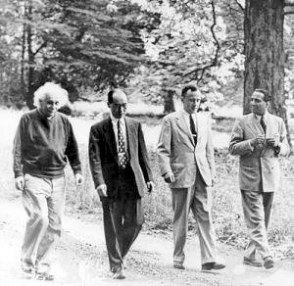
I never had a chance to visit Austin or take him up on his invitation to lunch. I’d like to have seen what was included in his 40 pounds of ESP materials. It was not until nearly 16 years later that I fully realized that other theoretical physicists were also reading the parapsychological literature for possible hints, apparently, as to how the puzzling contradictions innate in quantum mechanics may be expressed in everyday life. A bookstore I visited in Auckland during a freighter voyage in January 2002 was advertising Stephen Hawking’s new book, The Universe in a Nutshell, and mentioned this interest of theoretical physicists in parapsychological literature. I then recalled Wheeler’s ESP collection.
In our 1986 correspondence, Wheeler had seemed to show a more accommodating spirit toward parapsychologists than I had been aware of hitherto, but my wish to meet him halfway evaporated again when I read his autobiography, Geons, Black Holes, and Quantum Foam. A Life in Physics, written with Kenneth Ford in 1998. By that time Wheeler was in his 80’s, and perhaps I should not try to hold him strictly accountable for his apparent reversion to his old uncompromising attitude toward the “pseudoscientists.” In this autobiography, as I’ve said, he mentioned that 1979 AAAS meeting in Houston, but utterly failed to tell the full story. [Italics mine.]
BettyMac’s Vision of the Future
The Wheeler contact and its ramifications have contributed to my belief that the fields of parapsychology and theoretical physics will merge some day. I have filed the original Wheeler correspondence with the Elizabeth A. McMahan Special Collection in Duke’s Perkins Library as a nugget that some future historian may find of interest when he writes the history of that merger.
Without having the breadth of knowledge or the mental acuity to undergird my belief, I now have the feeling that the greatest future progress in understanding parapsychological phenomena will be made by theoretical physicists. According to their research, the universe seems to be split into two separate realities: that of the subatomic world and that of the everyday world in which we normally operate, each world following its own set of rules. Reconciling the two, making quantum theory make sense for large-scale senarios as well as for subatomic ones, is a major scientific goal. According to quantum theory, subatomic particles have a fuzzy essence. Electrons can be in an infinite number of places at the same time. Subatomic objects can be influenced at a distance. Photons can be both waves and particles. That humans do function in this strange Quantum world is already suggested by recent brain research, which indicates (according to K. N. Shanor’s The Emerging Mind, 1999) that consciousness may be identical with the quantum field of information and energy. [Roger Penrose (The Road to Reality, 2005) says, as I understand him, that gravity may hold the key to such unification; that applying its laws to subatomic particles as well as to larger entities may tweak the essential mathematical formulae into showing us that we already have the true and unifying “Theory of Everything.”]
Perhaps the strange phenomena studied by parapsychologists will also have a role to play in the eventual bridging of the present apparent disjunction between the two worlds of reality. How I wish that I could be present to welcome the future’s promising discoveries in this regard.
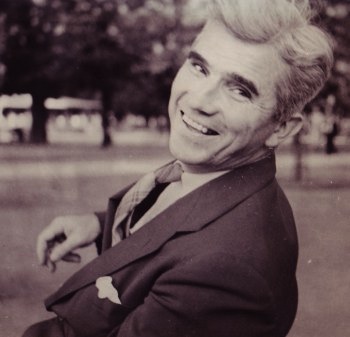
When Dr. Rhine said that the phenomena of parapsychology did not follow the laws of physics, it was classical (Newtonian) physics he meant. Quantum mechanics was scarcely known by anyone outside theoretical physics in those days. But now, every popular scientific magazine gives accounts of the totally counterintuitive phenomena studied by theoretical physicists. Quantum physics might appear to require that parapsychological phenomena exist.
Wheeler used to say, “Little steps for little people,” showing a willingness to make bold interpretations about the universe that went beyond those dared by most theoretical physicists. He said, “The universe is a self-excited circuit. As it expands, cools and develops it gives rise to observer participancy. Observer participancy in turn gives what we call tangible reality to the universe.” It is an expression of one interpretation of quantum physics: that physical reality does not exist objectively independent of the participating observers. Wheeler could give this concept of the universe no mathematical translation, so he used a diagram to represent it: a big U, with an eyeball on one arm (representing consciousness and observer participancy) and the big Bang on the other. William Press in a review of Studies and Essays in Honor of John Archibald Wheeler (1988) said that this example of Wheeler’s provocative intuition is “a style of science that profoundly offends some, profoundly inspires others.” I am one inspired by such provocative thoughts, but I wish that Wheeler’s style had also permitted a more open mind where Parapsychology was concerned.
Pictures. The first is a cover from the AAAS publication Science. The next are pictures of Dr. Elizabeth McMahan, followed by a picture of Wheeler, then a picture of Albert Einstein, Hideki Yukawa, John Wheeler, and Homi Bhabha, and last is a picture of J. B. Rhine.








